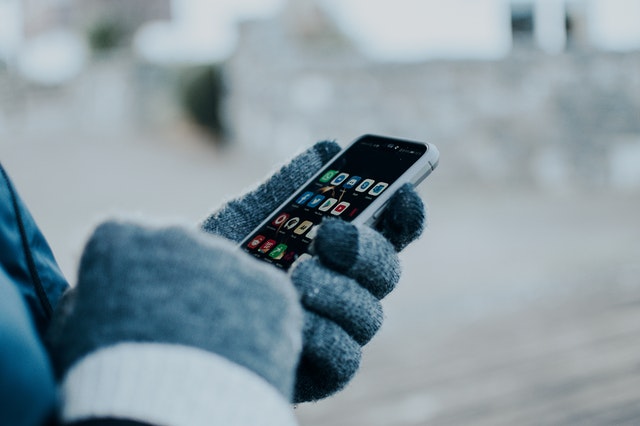A game-changing OS, compact size, portability, and of course, the brand ‘Apple’ – there are innumerable reasons why Mac computers are gaining remarkable popularity in recent times. During the first quarter of 2020, Mac saw an approximate $7.1 billion revenue, wherein the company generated sales of 3.6 million Mac computers – comprising a share of 5.8% of global PC shipments.
However, Mac OS hasn’t just intrigued tech lovers from around the world; it has also attracted a lot of attention from cybercriminals who are constantly looking for ways to break into your Mac OS device. Mac computers do have built-in security settings, but configuration can be challenging. This exposes your privacy and confidential data to malicious attacks. In fact, you cannot keep your Mac device 100% secure from cyber threats and malware even if your Apple security features are turned on.
Discussed here are 5 essential tips to help secure your Mac. This technology will help you in productive thinking from the latest cybersecurity threats.
1. Encrypt Your Network Connection
The MacBook is widely in use among students and for office purposes. Therefore, it is obvious that people spend most of their digital time being connected to the Internet. However, when you use unprotected networks, such as public Wi-Fi, to browse the net on your MacBook, cybercriminals might be keeping an eye on your online activities. Public or unprotected networks can be easily hacked through man-in-the-middle attacks or packet sniffing, posing a serious threat to your privacy and confidential data.
One of the best ways to secure your MacBook is by encrypting the network you use to surf the Internet. Use a reliable Mac VPN that hides your IP address and encrypts the network so that cybercriminals and third-parties cannot have access to your online traffic. Built-in advanced leak protection ensures your Mac security and privacy remains intact. By using a VPN for Mac, you can browse the Internet securely as well as unblock your favorite sites with one click.
2. Keep Your Operating System & Programs Up-to-date
Outdated software is an easy target for hackers because they can identify potential security vulnerabilities for which the patches are available only in the latest versions. As soon as a vulnerability becomes public, it can be exploited against you if you have not updated the device. This can threaten the privacy of your MacBook, its data, and your browsing activities.
Keeping your OS X and other programs up-to-date is one of the most straightforward and simplest ways to ensure your Mac device is safe from malicious attacks. As soon as updates are available, make sure you install the same. The best way is to enable automatic updates from your device’s settings so that you do not have to check back again and again.
3. Use Adequate Browser Security Measures
If you are using an unsecured browser or do not take proper measures to ensure safety, it can put a lot of things at stake, including your passwords, bank account information, credit card details, personal identification information, browser information, and other critical data. Hackers can easily break into your device through the browser and install malware that aids in phishing. Your accounts can then be hacked, possibly preventing your access in the future.
To address this security threat, it is crucial to use a good web browser that is known for its high-end security settings. According to a study, 64% of Americans would like their browser to offer greater protection of their privacy.” Some of the most privacy-conscious browsers today are Mozilla Firefox, Tor, and Brave. At the same time, keep the browser up to date. Most modern browsers do this automatically, ensuring your browsing activities remain secure from third parties. Another security measure is using HTTPS that allows you to connect to any server securely and privately. This is a life hack for your safety.
Other measures include knowing the right use of incognito mode, allowing cookies selectively, and blocking unwanted ads.
4. Use an Effective Antivirus for Mac
Regardless of the fact that Apple provides high-end security, it is not enough to protect your Mac against potential threats, such as data breaches, keyloggers, spyware, ransomware, or phishing attacks. These can pose a serious threat to your confidential data, bank account details, credit card information, browsing activities, and more.
To ensure improved protection, it is imperative to have a good antivirus installed on your MacBook. According to Statista, around 89% of desktop users have antivirus software installed, while only 80% of laptop users use an antivirus. But make sure to have an antivirus that designs for MacBook and can protect it from online attacks, ransomware, and a wide range of threats.
5. Use a Password Manager
Locking access to your Mac using a secure password is good. But what about your online accounts such as banking portals or social media profiles? If these are not secured effectively, malicious attackers can break in easily and get access to all your private data.
To prevent this risk, use a password manager or iCloud two-factor authentication to secure your online accounts.
Conclusion
With Mac devices becoming increasingly target to cybercriminals, it has become more important than ever to secure your data. Following the above security measures can help protect your MacBook and ensure your information is safe from malicious attacks. Visit here https://kurminews.com/for more information.













